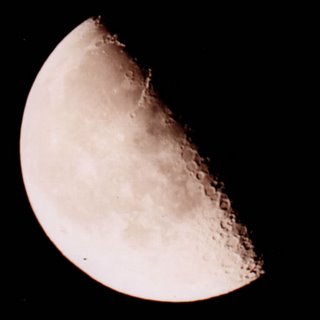Using the SP-C8 with the 26mm (so 77x power) up at Muskoka from 10:04pm on.
Instrument: Celestron 8-inch SCT
Mount: Vixen Super Polaris
Method: star hopping
Looked at Vega. It is blue-white. Looked at Antares, which is red-orange. Looked at Alcor/Mizar. White and close together. Arcturus is white-blue.
Looked at Messier 103 (M103). A loose faint cluster of yellow, small stars.
A couple of shooting stars. The first was from east to west, from Draco to Ursa Major. The second one, a short one, went into Ursa Major from the south. Another east to west through Ursa Major.
Saturn! I can see the rings! Wow!
The Moon was up at 12:00am, around 10° or so elevation.
Faint northern lights, spires, white, glowing rays.
Some clouds, cirrus, up high.
Magnitude test: 52. (See the RASC
Observer's Handbook for chart.)
Andromeda aka Messier 31 (M31) was just a smudge.
An artificial satellite went from south-west to north-east.




